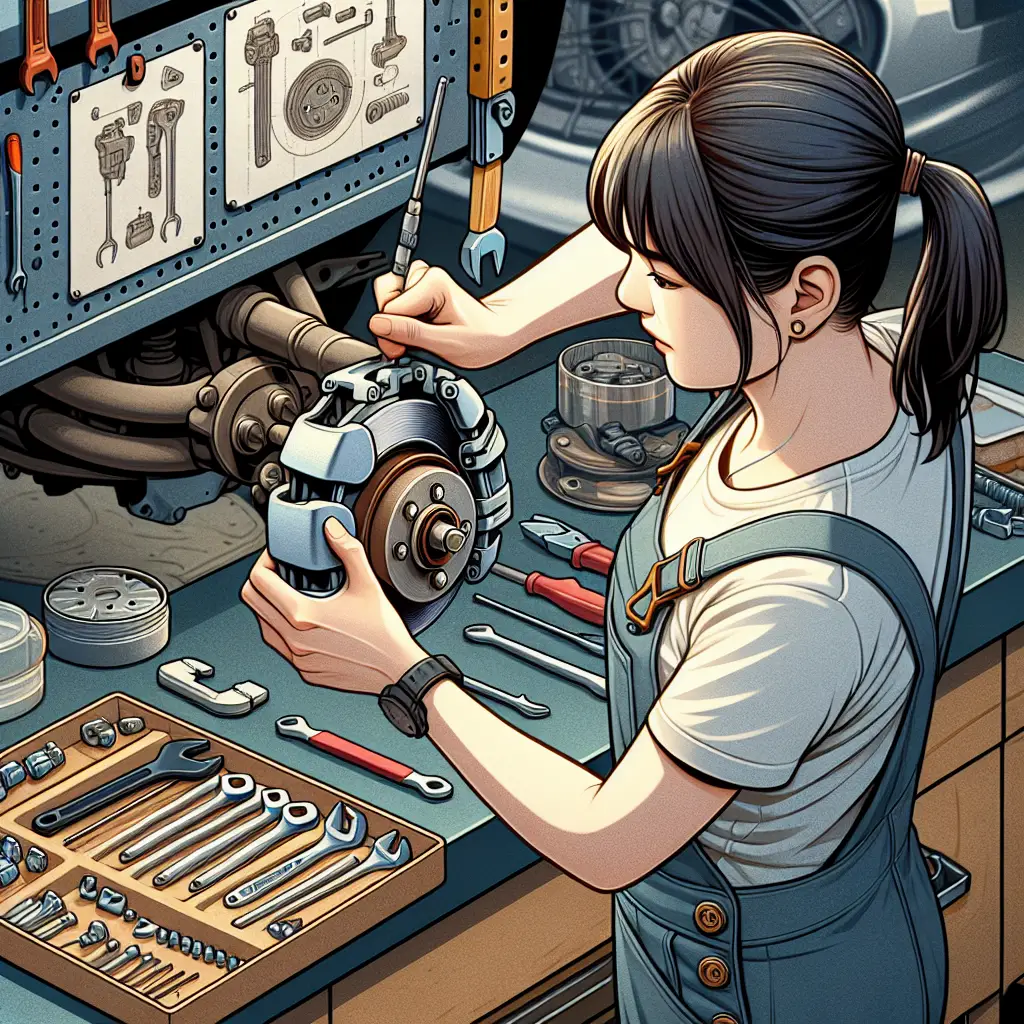Title: How to Turn Back Brake Caliper Without Tool
Brakes are undoubtedly one of the most critical components of vehicle safety. As your car ages or travels substantial distances, brake maintenance becomes a non-negotiable part of your regular vehicle upkeep. For those DIY enthusiasts or cost-conscious consumers, learning to manage your brake system, including how to turn back a brake caliper without a tool, can be a life and budget saver. In this comprehensive post, we’ll delve into the surprisingly straightforward process of retracting a brake caliper sans the specialized tool.
Understanding the Brake Caliper
Before we begin, it’s key to grasp what a brake caliper is. The caliper is a part of the disc brake system, which functions by creating friction with the brake rotors to slow down or stop your vehicle. When you engage the brake pedal, the brake caliper presses the brake pads against the rotor to perform this action.
When and Why Calipers Need to Be Retracted
Retracting brake calipers is usually necessary when you are changing your brake pads. As these pads wear down, the caliper piston gradually extends further to keep the pads near the rotor. New brake pads are thicker, so the piston needs to be pushed back into the caliper housing to accommodate them.
The Traditional Way
In a professional setting, mechanics use a caliper piston tool to retract the piston effortlessly. This tool can range from a simple clamp-like device to a more polished piston tool designed specifically for the job. However, not everyone has access to such tools, and that’s where our makeshift method comes into play.
Step-by-Step Guide to Retract a Brake Caliper Without a Tool
Step 1: Safety Precautions
Firstly, ensure your car is parked on a flat surface and the emergency brake is applied. Wear safety glasses and gloves to protect from brake dust and debris. Remember safety is paramount when dealing with automotive repairs.
Step 2: Access the Caliper
Loosen the lug nuts on the wheel before lifting the car with a jack. Once the car is securely lifted, remove the wheel to expose the brake caliper.
Step 3: Remove the Brake Caliper
Using a ratchet and the appropriate-sized socket, remove the caliper from its bracket. It’s crucial to support the caliper properly once it is removed; do not let it hang from the brake line, as this may cause damage.
Step 4: Compress the Caliper Piston
Now, it is time to compress the piston back into the caliper’s housing. You can often do this by using a C-clamp and an old brake pad to evenly distribute the pressure on the piston. Place the old pad against the piston and turn the clamp slowly to push the piston back inwards. Proceed with caution to avoid damaging the piston.
Step 5: Inspect and Reassemble
Inspect the area for any damage or unusual wear and replace the caliper onto its bracket. Make sure to lubricate sliding pins or contact points according to your vehicle’s maintenance guide. After that, re-install the wheel and lower the car back to the ground.
Step 6: Test Your Brakes
Before hitting the road, it is essential to test the brakes. Pump the brake pedal with the car parked to ensure the piston seats properly and the brake pads are in the correct position.
Important Considerations
- Brake Fluid Levels: Retracting the caliper piston will increase the pressure in the brake fluid reservoir. Be sure to check and adjust the fluid level as necessary to avoid overflows.
-
Correct Procedure for Your Car: Some car models may require a slightly different method, especially if they have an electronic parking brake system or if the piston must be rotated instead of pushed back. Always refer to the manufacturer’s guidelines for the exact procedure.
-
Professional Help: If you are uncomfortable with performing this task or encounter difficulties, seek professional assistance. It’s better safe than sorry when it comes to brake repairs.
Valuable To Remember
Improper handling of brake components can lead to brake failure, which is dangerous. This guide provides a general overview but cannot replace the specific knowledge contained within a factory service manual (Alldata, Haynes Manuals) or the expertise provided by a licensed mechanic. If you tackle brake work, do so with due diligence and care.
Final Thoughts
Regularly maintaining your vehicle’s brakes is not only a crucial part of vehicle ownership but can also be empowering as you learn more about how your car operates. Turning back a brake caliper without a tool is just one of the many tasks that you can perform to ensure the seamless function of your automobile. Arm yourself with knowledge, prioritize safety, and you’ll find that many aspects of vehicle maintenance can be accomplished in your own garage.
For more insights into DIY car maintenance, troubleshooting tips, and the latest in automotive innovation, keep following our blog. Drive safe!

